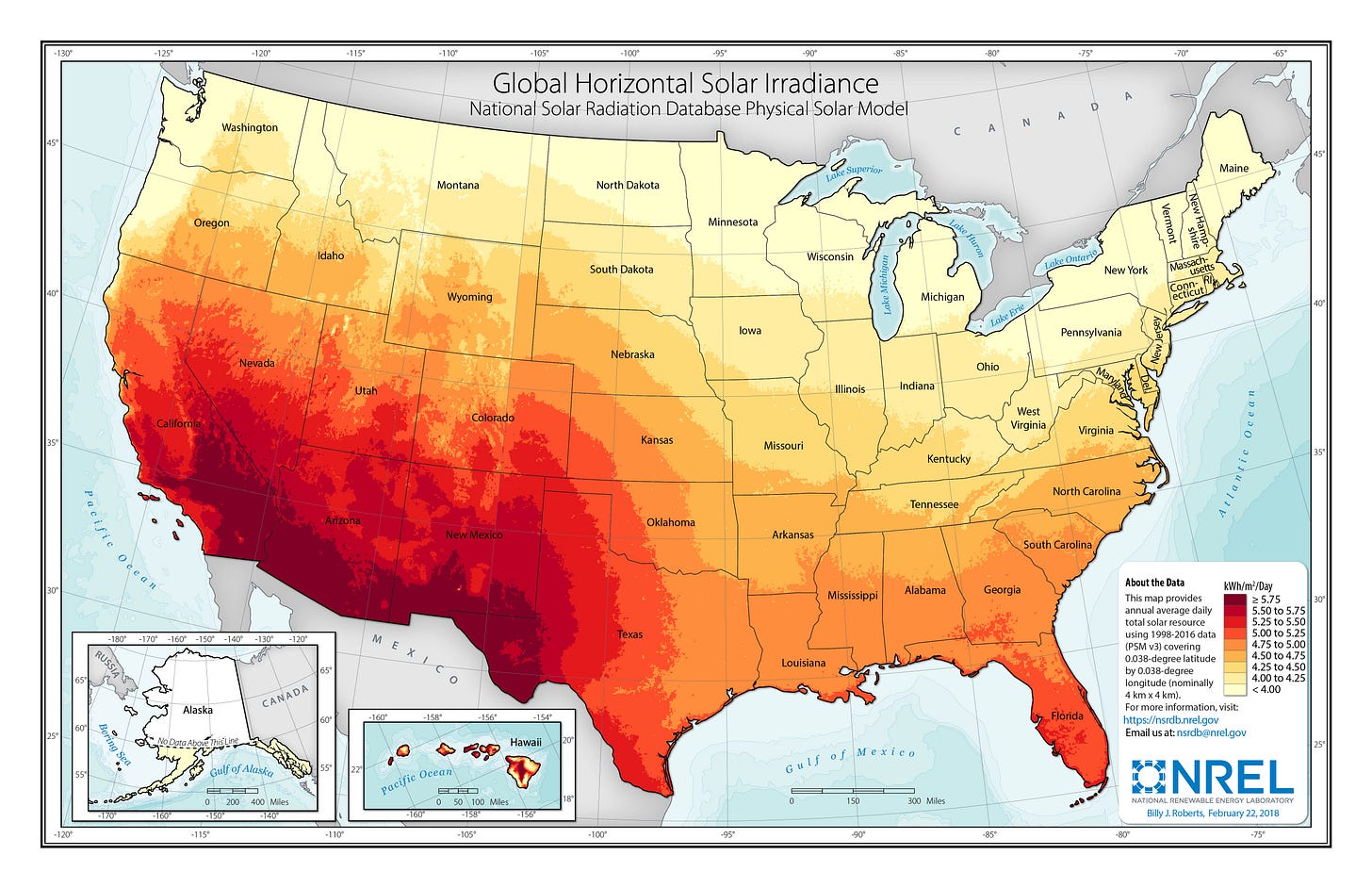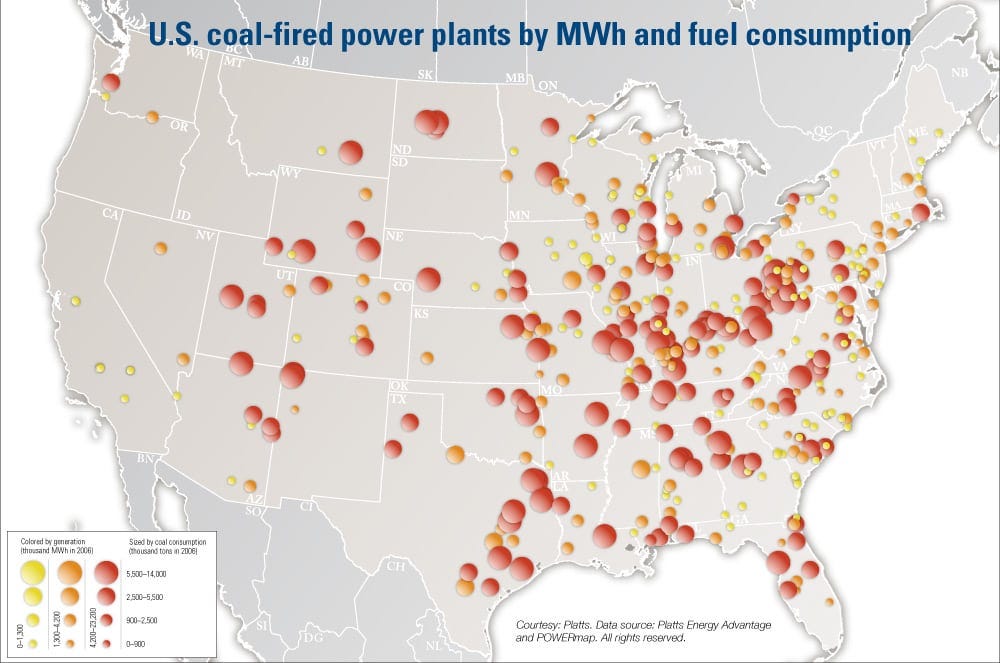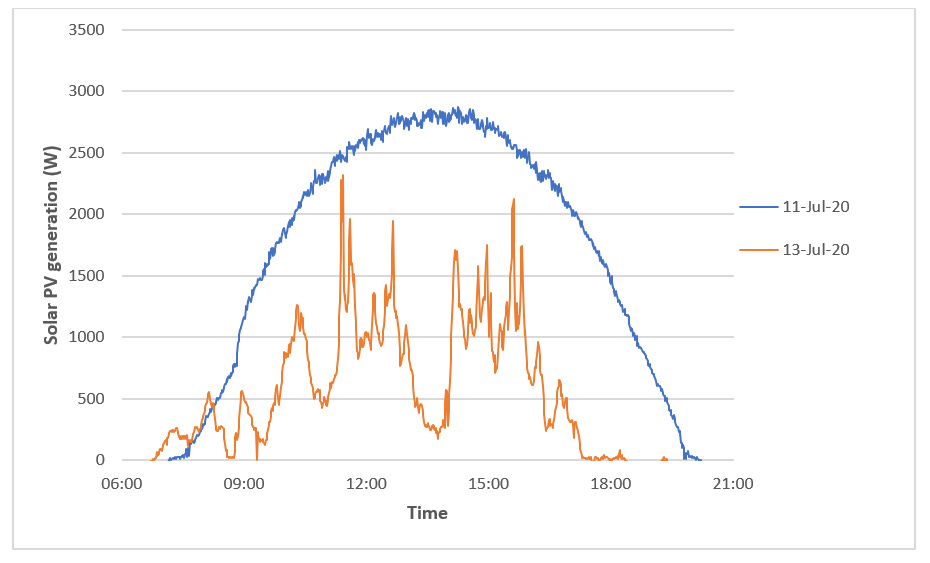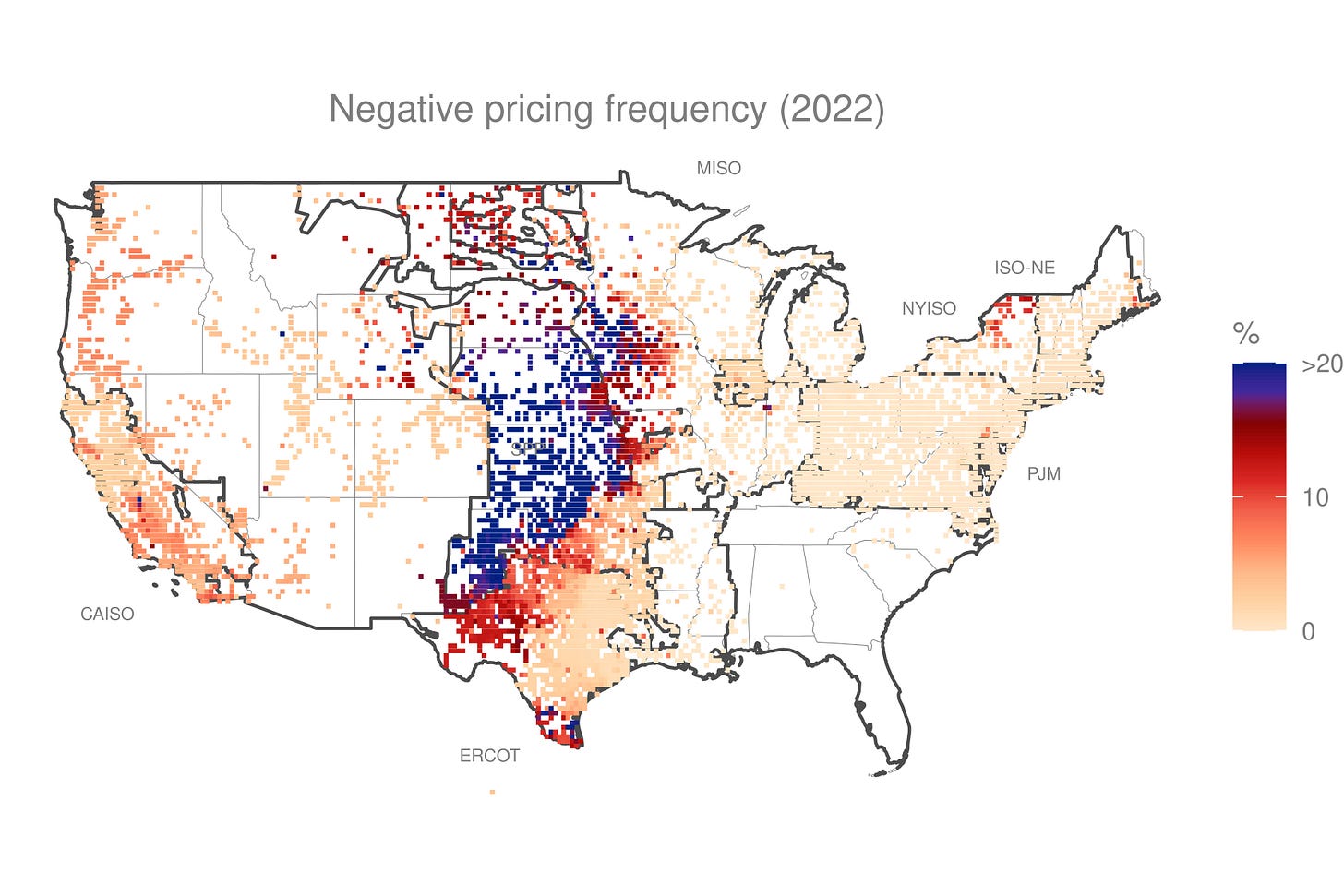Can increased wind/solar retire US coal plants?
It seems unlikely, but fortunately there are other options...
Except wood, coal is by far the worst violator of carbon emissions, air pollution, and human health. If Greens are to achieve anything like their stated goal of global Netzero in 2050, it will require a complete elimination of coal-burning plants throughout the world.
In a previous challenge, I asked any Green to give me evidence that solar and wind have decommissioned a single coal-burning plant in the world. So far, none have been brave enough to come forward with a single instance of success! The best I have gotten are vague references to nations where it might have happened or statements of confidence that the next decade will be completely different.
While I acknowledge that there might be a few cases of success, the overall trend is clearly that solar and wind have not replaced coal-burning power plants and fossil fuels in general. In reality, increased electricity generation by solar and wind is almost always in addition to coal and fossil fuels, not instead of coal and fossil fuels.
Today, I want to see if this dismal record can change in the future, particularly in the United States. Is it possible for dramatic increases in solar and wind capacity to lead directly to the decommissioning of coal plants in the United States over the next few decades?
Note that I focus on coal in this and other articles, rather than other energy sources because:
Coal is the worst carbon emitter, except wood.
Replacing natural gas plants will do very little to reduce carbon emissions and air pollution, plus solar and wind need natural gas peaking plants to load balance.
Replacing nuclear plants with solar and wind makes no sense from either an economic or environmental perspective (even though Germany and Spain are trying to do it!).
Replacing hydro plants with solar and wind makes no sense from an economic and only it only makes sense from an environmental perspective if you value fish more than fighting climate change.
Replacing internal combustion engine transportation with solar and wind is impossible without radical new car designs or an extremely expensive deployment of grid-scale batteries (article on this upcoming).
See also my other posts on Energy:
Solar and Wind are in the wrong places
Solar and wind power are in the wrong regions to replace coal-burning power plants. All renewable energy, like all energy sources, is highly constrained by geography. The difference is that electricity is far harder to transport and store than fossil fuels.
The United States is blessed with vast solar, wind, geothermal, and hydro resources. There is no other nation in the world that has so much energy from as wide a variety of renewable energy resources. Unfortunately, these resources are highly focused on a few regions:
Hydro is highly concentrated in Washington, Oregon, and Idaho (although the Tennessee River region also has substantial hydro resources).
Solar is highly concentrated in the Southwest and Florida.
Onshore Wind is highly concentrated in the Great Plains.
Geothermal is highly concentrated in the Sierra Nevada mountains and the Great Basin.
Notice that except for solar energy in Florida and hydro in the Tennessee River area, all of these regions are in the western half of the United States. Unfortunately, about 80% of the U.S. population lives east of the line that runs from San Antonio, Texas to Fargo North Dakota. Or to look at it another way, 58% of the U.S. population lives east of the Mississippi River.
Not by coincidence, the region east of the Mississippi River is also the region that burns the most coal. It seems highly unlikely that electricity generated in the Western half of the United States is going to be able to replace coal-burning plants in the Eastern half of the United States. Yes, it might be possible for a small percentage of power plants, but not replacement at scale.
It is important to note that the problem is much worse outside the United States, particularly in Asia, where the majority of coal plants are.
Solar and Wind generate electricity at the wrong times
Electricity is not fungible, like money, commodities, or consumer goods. You cannot generate electricity and then use it at a later time (unless you have vast amounts of grid batteries). The vast majority of electricity is used within seconds of its production.
An electrical grid is a surprisingly delicate network. The supply and demand need to match each other every second of the day. A grid can be 99.9% perfect through almost the entire day, but in one second supply and demand do not match, and then the grid goes down.
Electrical grids are so complicated that it is a minor miracle that they function at all.
Variations in demand
Before renewables electrical grid operators only had to worry about demand. With experience and solid data, operators can estimate the expected demand based on the:
Time day (more power is used during the day than the night)
Day of the week (weekend usage is different from weekdays)
Predicted temperature (for heating and cooling)
Season (due to changing temperature and amounts of sunlight)
Holidays
Utilities typically have two categories of electrical generators:
Base load, which runs 24/7 for months on end, only shutting down for routine maintenance. Nuclear, coal, oil, natural gas, and to a certain extent hydro can run base load.
Peakers, which quickly turn on and off to match predicted and actual demand. Peakers are almost always powered by natural gas, although in some circumstances, hydro can play that role.
Wind and solar can do neither.
Variations in supply
Solar and, particularly, wind add on an entirely new level of complexity. In addition to fluctuations due to demand, now grid operators have to take into account fluctuations in supply.
Solar is somewhat predictable. Operators know the:
Average amount of solar energy for that day
The predicted weather (cloudiness is the key variable)
Sunrise time
Sunset time
Angle of the sun at any given time
Unfortunately, a sunny day (in blue below) can produce far different patterns of electricity from a partly cloudy day (in yellow below):
Assuming a sunny day, grid operators a fairly good idea of the amount of electricity that will be generated each minute of the day (assuming the weather forecast is fairly accurate, which it often is not), but it leaves a big problem during:
the winter, early spring, and late fall when the days are short.
the night year-round when no solar electricity is generated.
the “shoulder times” during the morning and late afternoon when the sun is low in the sky. This leads to less electricity being generated.
During both those times, other sources of electricity must be used. The most common form is natural gas “peakers.” The problem is that peakers are far less energy-efficient (roughly 40%) than CCGT (which is now over 64% efficient), which can be run as base load sources of electricity. So peakers generate more carbon dioxide and air pollution than CCGT.
Wind power is more reliable throughout the year, but far more unreliable within each day. While solar power is somewhat predictable over the course of a day, wind power is extremely erratic. The total amount of electricity produced fluctuates wildly throughout the day. For electrical workers who are trying to keep their grid from collapsing as demand changes throughout the day, the wind is a serious problem. It is such a problem that, unless a region is very windy, wind turbines are not worth the investment.
Geothermal can run as a base-load source of electricity, but it is far less widespread than either wind or solar.
Much renewable electricity is wasted
Even when solar and wind generate electricity at the correct location, much of the electricity can be wasted. During times when demand for electricity is simply not high enough, a significant amount of electricity generated by wind and solar is:
Simply not used because the generator is temporarily disconnected from the grid (spilling)
Is sold at negative prices (negative-watts).
In addition, solar and wind plants are simply turned off when the electricity is not needed (curtailment). So utilities spend billions on wind and solar, only to spill it or sell it at a loss. This is obviously not cost-effective. Finally, a certain percentage of electricity from all sources is wasted during transmission.
Below is a graphic of the frequency of negative pricing. Notice that negative pricing is concentrated in the Great Plains, where wind is common, and California, where solar is common).
If you link to the interactive version of this graphic, you can see that the frequency of negative pricing increases each year (use the slider on the bottom right of green bar above the map).
What about batteries and other storage?
I will write about this option in another post. The quick version is that it is technologically possible, but it will be extremely expensive to do so. And you still have not dealt with the fundamental problem of geography.
Solar and Wind have diminishing returns
Perhaps the single biggest disadvantage of solar power and other renewable energy sources is that it is subject to diminishing returns. Supporters of renewable energy see constant technological improvement and assume that scaling up those technologies will become easier and easier. In fact, it is the opposite.
As a region constructs solar power facilities, it naturally sites them in the best geographical locations. As more solar power facilities are constructed, they must be located in less and less productive locations. This means solar power capacity declines as the energy source is ramped up, the opposite of what we need.
This is even more of a factor when one takes into account of when solar and other renewable energy sources create electricity. If one constructs a large amount of solar plants in the same geographical area, they will all produce power at roughly the same time of day. Any additional electricity comes when it is least needed. And no electricity is produced 50% of the time (i.e. during the night).
At some point, additional solar produces too much electricity on sunny summer afternoons meaning all that additional electricity is worthless. Useful electricity is only generated when solar power is less efficient (i.e. mornings, early spring, late fall, etc.).
This means solar is locked into ever-diminishing returns. Each new solar facility produces less and less useful electricity per unit. Constant technological improvement will mitigate this problem but never entirely do away with it.
All of these limitations together clearly make solar power a niche source of energy for the foreseeable future. Incremental improvement in the efficiency of solar panels is very unlikely to overcome these disadvantages. And a fundamental breakthrough in solar power is no more likely than for any other energy source.
I do believe that solar power can play a role in our energy future. In highly populated regions with high levels of solar radiance and high enough temperatures, solar power can essentially cancel out the additional electricity needed to run air conditioning.
But with current technology, solar power cannot replace fossil fuels: not by a long shot. And as we will see, the same goes for wind.
Supply and Demand rarely balance
The amount of electricity generated by wind and solar varies widely minute-to-minute, hour-to-hour, day-to-day, season-to-season and year-to-year. This leads to a fundamental problem. How do you match electricity supply with customer demand minute-to-minute? Failure to match customer demand will make the electrical grid very unstable. Failure to do so in a cost-effective way will make the electrical grid very expensive.
Supporters of renewable power are forced into one or more of the following options:
Supplementing wind and solar with fossil fuels, particularly natural gas peakers that turn on when renewable electricity production is lower than demand. This is the most cost-effective solution, so the vast majority of nations choose this option, but it is not considered Green. Nor does it reduce carbon emissions by more than CCGT already does.
Supplement wind and solar with biomass. Biomass would perform the same role as natural gas peakers, but as we will see this is not Green either.
Storing the electricity in utility-scale batteries, but as we will see this is not Green either.
Building far more wind and solar capacity than is needed, so there is always enough electricity produced at any one time.
Using hydroelectric dams to store the excess power in the form of water. This option is only possible in a few geographically unique regions where hydroelectric and wind are cost-effective.
Norway/Denmark is one of the few examples. This is unlikely to be a global solution.
The only truly Green option is the fourth option: building far more capacity than is needed. Unfortunately, this option increases the amount of wind and solar that are needed by roughly three to five times. And even then it is not clear that the system can generate enough electricity during non-windy nights, particularly in the winter. This is a particularly bad problem if the transportation sector is electrified.
Given all the above, how exactly is vastly increased solar and wind in the Western United States going to replace coal-burning power plants in the Eastern United States?
There is a better option
Fortunately, there is another option that is both good for the economy and good for mitigating damage to the natural environment. We can replace coal-burning power plants with a blend of natural gas, nuclear, and hydro. The exact blend will vary by geography and local cost structure. In the United States, natural gas is by far the most cost-effective option.
This is exactly why it has been decommissioning coal-burning power plants in the United States over the last 20 years. With a strong push, we could complete the job in only 5 years.
See also my other posts on Energy:















Nice article, Michael. The tyranny of geography really puts deep decarbonisation for places like ISO-NE through wind and solar out of reach. A major enabler of greater decarbonisation from wind and solar for the US as a whole is more transmission and greater connectivity between the grids. From what I can tell there is some progress on that but not nearly enough. I totally agree with your framing - the conversation around decarbonisation should be laser focussed on "how do we decommission coal early" rather than "how do we build more wind and solar", which is a proxy for the thing we really care about (obviously decarbonisation itself is a proxy also, but we can leave it at that level). John Arnold is also on this case - https://x.com/JohnArnoldFndtn/status/1752010342786375784?t=0rQ0qhsXk3B3v1MphfvC5w&s=08
Batteries will help with the load leveling, on a longer run we need a lot more peak power - far more than the grid demand -- to produce cheap low pressure Hydogen. Batteries have limited energy per weight, preventing their use for long haul flights, let alone military usage. Synfuels will work - and are straightforward to make given low cost Hydrogen. The Hydrogen can be used in fuel cells to make electricity as well - a flow battery if you will to help load level. The other use for Hydrogen, which I have NOT seen discussed, is feeding plants.
I have seen lots of discussion of growing plants under lights in destination areas - yes it avoids transit costs and a lot of pest and processing issues, but it is inefficient as hell -- maybe 20% for the solar cell, hopefully 75% for the light source (probably worse), and probably < 30% for photosynthesis (which is typically a 4 photon cycle, but in some crops can be a 3 photon process). I bet with some genetic engineering plants could absorb hydrogen and oxidize it to generate biomass - with far higher energy efficiencies. Note that there would be some interesting engineering to keep the growing zone from having an explosive atmosphere, but I am sure it could be done. For a ~ 10% energy loss, you could feed the plants Ammonia rather than Hydrogen, which would provide fixed nitrogen as well.